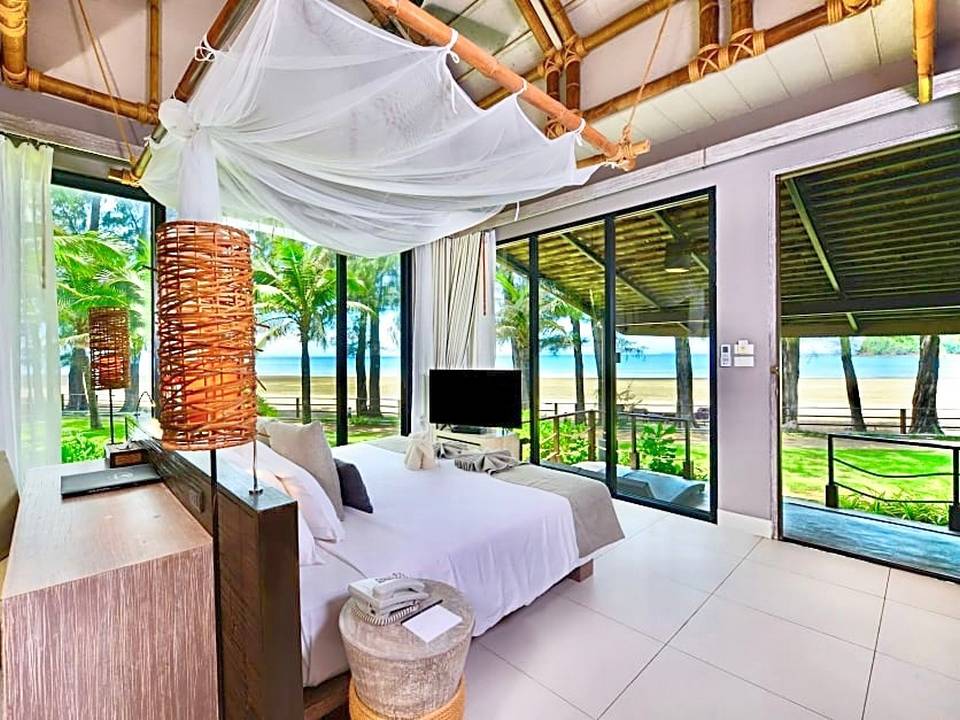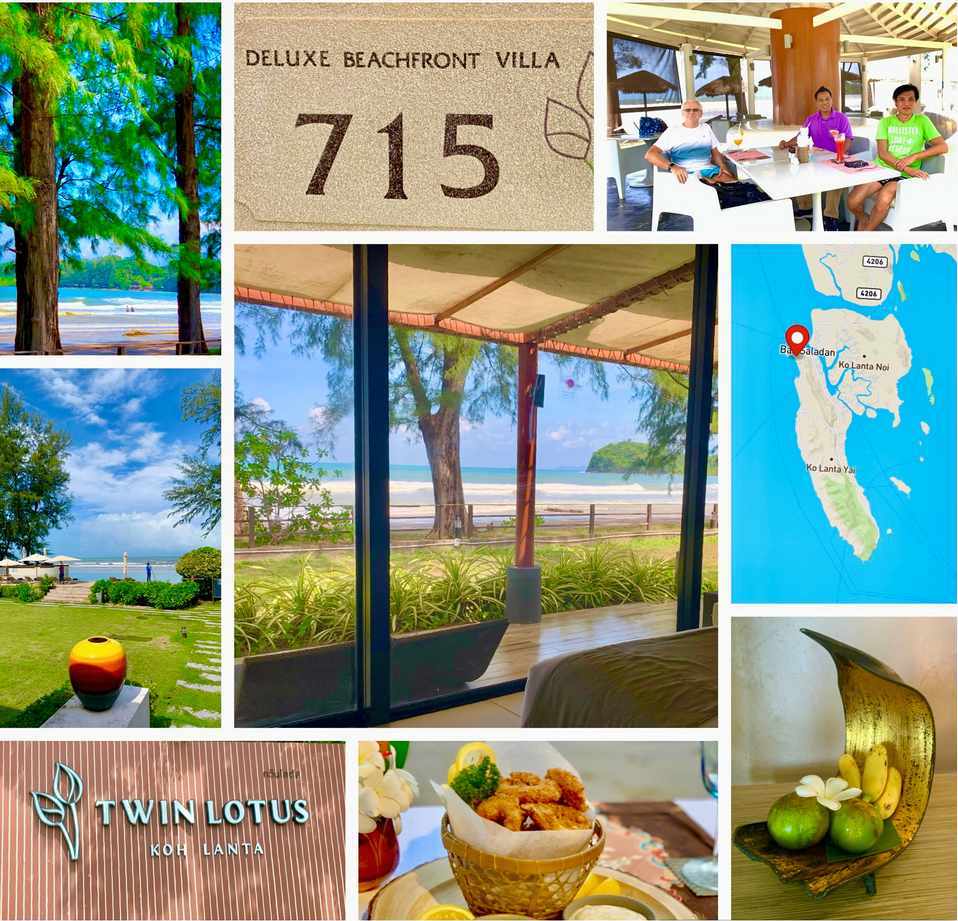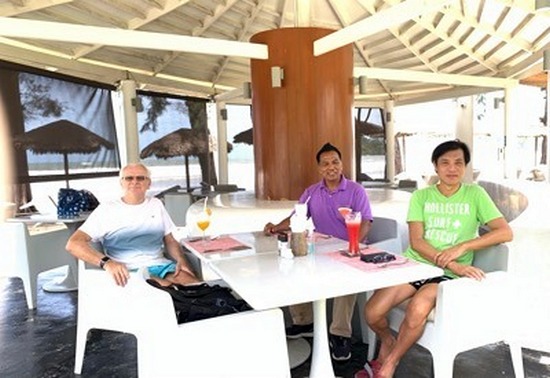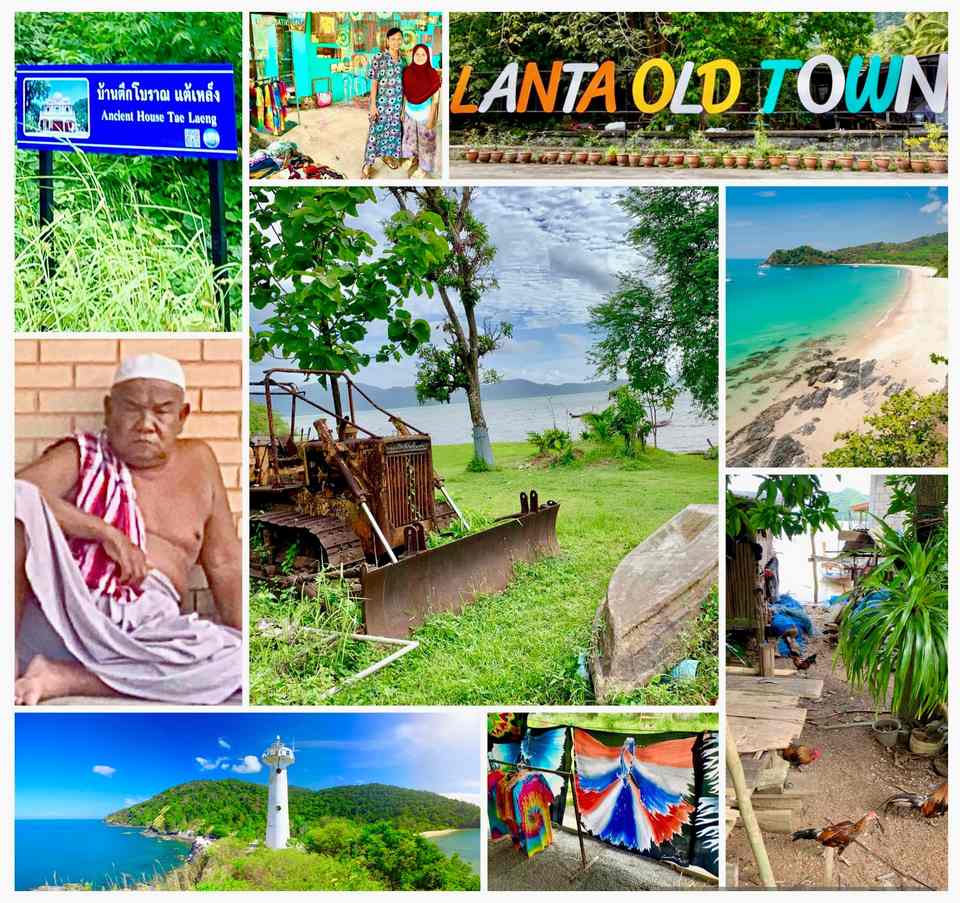
We were looking for a four-day hideaway – a memorable island getaway with easy access to Bangkok to chill. We had heard much about this lovely little island but had never visited. This was about to change!
Koh Lanta is located in the island district in Krabi Province on Thailand’s Andaman coast. It’s known for its excellent beaches and National Park.
We booked the Twin Lotus Resort & Spa, which came highly recommended and had steadily been making a name for itself and gaining high marks. We weren’t disappointed.
We flew from Bangkok with Thai Smile, an airline I am increasingly pleased with because they use wide-body A320 jets. Owned by Thai International, it is the low-cost arm of the national airline, and the service and facilities are excellent. The other significant advantage is they fly via Suvarnabhumi airport.
Whilst all areas in Thailand are now open for all tourists and are free to travel throughout the country. Masks are optional, however, in crowded venues. While flying, there is still a mask-wearing mandate that everybody follows.
We set off to the airport, eager to resume travelling. Flying time is a little over one hour from Bangkok to Krabi.
It felt as if the flight was over almost as soon as it began, so this was a comfortable introduction to southern Thailand.
On arrival in Krabi, we quickly recovered our luggage. We were met by English-speaking ‘Noon’, one of the hotel drivers from the Twin Lotus Resort and we transferred via road to the hotel, a journey of approximately 1.5 hours, including a stop at a service area.
The car was a clean 4×4, and Noon was excellent. The journey was made more interesting with the short 10-minute ferry crossing from the mainland onto the island.

Once we disembarked from the car ferry at Koh Lanta Noi, we headed for Koh Lanta Yai (Noi means small, Yai means large). We drove 20 minutes to the resort, crossing the bridge that links the small island to the larger.
The larger island, Koh Lanta Yai, is referred to as just Koh Lanta, as it’s the district’s leading tourist destination and is home to the largest population.
Koh Lanta is unique because it combines southern Thai hospitality with the utopian island atmosphere typical of Asia. Koh Lanta also has a rich culture due to receiving many immigrants, such as the Chinese, Muslims and even sea gypsies.
As Koh Lanta is easily accessible, exploring is great fun; we enjoyed discovering new places, deserted beaches, delicious food, fair prices and authentic rustic places. There is much to see, and the island covers 340 km² (sq km) of land.
The 76-room Twin Lotus Resort & Spa is an adult-only property, a 4.5-star resort. Our villa was a short step from the beach. The resort sits in a delightful bay on the island’s northern side. We were met by the hotel general manager Khun Biggs with his broad smile and friendly personality. We were quickly presented with a welcoming cold towel and a refreshing cool Thai herbal drink by the front-of-house team. We were then escorted to our beachfront villa in one of the hotel’s numerous golf carts.
The property with its own driveway is a quiet, comfortable retreat. Well manicured and maintained, the resort is a haven of tranquillity and calm. Nature is all around, and the air is clean and pure—a great respite from city life.
Just 10-minutes away is the Sala Dan Pier, a busy port area and a magnet for nightlife. This is where the high-speed ferries arrive and depart. Ferries from Phi Phi, Koh Lipe, or private boat will come into Sala Dan Pier. We visited during the daytime, so it was pretty quiet. Typically it’s a hive of activity; however, post-Covid, it was still a little quiet. With many large boats moored for excursions and transfers, the area is a mini Fisherman’s Wharf. A modern jetty with seafood restaurants, bars and eateries, as well as a variety of small shops for souvenirs and trinkets.
Rooms at the Twin Lotus Resort & Spa are tastefully furnished with luxurious interiors. Each room has a flat-screen cable TV, a minibar and a safe. An electric kettle and a hairdryer are provided. All rooms are en-suite, with air-conditioning and free Wi-Fi. Rooms have private balconies. The beach-side infinity pool is excellent, and the resort also has a fitness centre and a tour desk where guests can book sightseeing trips.
You can also try a relaxing massage and a wide range of treatments at the spa or just lounge by the swimming pool. We loved the food at the resort. We ate all our meals here, at the beachside restaurant and bar. The views are outstanding, and the service team is accomplished and world-class. The restaurant specialises in Thai cuisine, the freshest seafood and a good choice of delicious western favourites. The chef was very accommodating, and she was quite simply outstanding!
The villa is exquisite, located on the beach. Self-contained with a beautiful large outdoor patio with day beds and loungers. The villa balcony overlooks the bay and is just steps from the water’s edge. For shade and greenery, the resort has planted many trees, including tall pines, which have the most beautiful aroma, particularly in the early morning and early evening.

The villa is extremely comfortable and has everything you require for a beautiful beach side holiday. The eco-friendly interior design is classic and comfortable. The bathrooms are incredibly spacious, and the walk-in shower is palatial.
We particularly liked the beautiful views from the floor-to-ceiling windows that cover two sides of the room, allowing light to stream in with netting and curtains that silently slid into place for privacy and sleep time.
We couldn’t wait to explore – so as soon as we had partly unpacked, we went for a walk along the beach, past the hotel’s horizonless pool and the beach bar – we were impressed already.

What to do in Koh Lanta?
We took the opportunity to visit Lanta Batik, which is on the northern tip of the small island and is run by a very dynamic family headed up by the extraordinarily talented Mr Saichon Langu.
His creations are incredibly artistic and so much so that we purchased three pieces of batik to be used for Christmas presents for family and friends. We paid less than Baht 400 (US$11) each.
After visiting the boutique shop, we drove about a kilometre further down the road to turn off to a long driveway to Tae Laeng, a sign in English read ‘Ancient House’.
Built by Chinese settlers in 1953, it has a beautiful view overlooking the water. The house and grounds are no longer occupied; however, the colonial-style property is mainly untouched and harks back to a bygone era. In the corner of the grounds is a small family cemetery plot which is still tended and visited with evidence of flowers and offerings to the respected ancestors.
We also saw the abandoned agricultural equipment that was used by the family when they were living here, including a very rusty but largely intact tractor which was used to pull the boats out of the water.
A visit to Koh Lanta would not be complete without visiting the Mu Ko Lanta National Park Centre on the southern tip of the large island. Many visit the lighthouse on the hill and enjoy views of the coastline and the Andaman Sea. This area of Koh Lanta is part of the National Park, which covers several islands, including Koh Lanta Noi and Koh Lanta Yai. The national park headquarters and visitors centre is located here at Laem Tanod, where you’ll also find hiking trails, scenic bays and monkeys.
We went by car with the ever-present Noon driving as our unofficial guide. The journey from the Twin Lotus is 26km and takes approximately 50 minutes. It was an incredible drive along the coastal road through small villages and exciting pockets of eclectic rural life. We were not in a hurry, and we often stopped to take photographs and walk around. For me, it was an excellent snapshot of island life. It was evident that the islanders have civic pride in their surroundings. We saw almost no litter, and the roads were well built and maintained.
On arrival at the national park centre, You first see the lighthouse and the botanical garden and the picturesque bay. You can then stroll around the grounds among the towering palm trees and campsite.
This sprawling 134 square km park is full of caves, viewpoints, and abundant natural wildlife. According to the National Park’s literature, over 130 species of birds can be found in the nature reserve.
This part of Koh Lanta, depending on weather conditions, is also an excellent place for snorkelling and scuba diving with its clear water and coral reefs.
We visited the old town on our return trip as we drove north and then east. On arrival, I was reminded of Penang and George Town’s colonial-style buildings and heavy Chinese influences.
Lanta Old Town, located on Koh Lanta’s East coast, was once the island’s main port for trade. Now Lanta Old Town is a charming place to visit, especially walking street where many buildings have retained their original wooden features, which look and feel like it’s stood still for 60 years. You can stay in Lanta Old Town, but few people choose to because it’s located on the island’s east coast, which has no beaches. All the beaches on Koh Lanta are on the west coast of Koh Lanta Yai.
Lanta Old Town acted as the port and commercial centre for the island, it has a post office, police station, Buddhist temples as well as the island’s hospital. The long pier and port provided a safe harbour for Arabic and Chinese trading vessels sailing between the larger ports of Phuket, Penang and Singapore. The shopping and walking streets here have been very well preserved. The area is pristinely clean, and I would recommend a visit for sightseeing or shopping if you are visiting Koh Lanta.
 |
 |
 |





